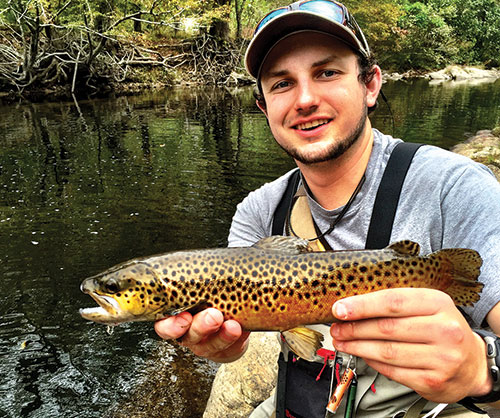Take a look at any stream in the mountains in the summertime and I guarantee that you will find a whole passel of people at every available roadside pull-off and recreation area parking lot, either swimming, tubing, fishing, etc. If you’re a local to these mountains than I can also guarantee that you have probably noticed a significant influx of people engaging in these activities in places that were otherwise left untouched just a decade ago. Through magazines, online tourist guides, and social media sites, more and more people have access to find out how and where they can find these places along mountain waterways to recreate. Places that were already famous, such as the French Broad River in Asheville, have seen a significant spike in usage over the last few years. People in the tourism industry might see this as a good thing, however others, like myself, have begun seeing the negative sides of this notoriety of our streams, in the forms of trash and overcrowding, as it has been negatively marketed as a tourist commodity, rather than a natural resource.
Don’t get me wrong; I’m against barring anyone who can appreciate the beauty of our mountain streams, from coming to see them. The key word being, appreciate. The mentality that, unfortunately, many people hold of natural spaces is that of just a playground, and when a natural space like our mountain streams and rivers is publically announced in mass, it can bring with it the physical consequences of those ingenuous mentalities. This is generally evidenced in the form of trash that is carelessly tossed out of car windows or left on the stream banks to get washed away. Along with this, the localized habitat of the stream becomes compromised. Fish will either move off completely or not feed at a natural pace due to the increased traffic flow of people. Rocks that serve as homes to aquatic insect species become displaced, and a greater opportunity for more serious pollutants to enter a stream arises due to the increased traffic flow. In some cases, entire sections of rivers that were once extremely productive and high in diversity now only show their abundance in the amount of beer cans and cigarette butts left on the river shores.
This constant flow of traffic and the negative impacts that it has on our natural resources makes it increasingly difficult for folks who actually appreciate the places to find solitude in nature. No one wants to come to a place that is supposed to hold serenity and instead find 50 tubes, baby diapers, and screaming children/ adults lining the stream banks. As the outdoor recreation appeal of Western North Carolina grows, I can only imagine that these issues will only become more compounded year after year. Is there any good solution to this? I seriously doubt it, but that doesn’t mean it isn’t worth discussing. Anglers and outdoor enthusiasts who truly appreciate our mountain streams are the first and, in some cases, the only defense from careless misuse and over saturation. The problem is there, but the solution has to come from us before we lose these places to the long arm of commercialism and ignorance.
Ethan Hollifield is an Environmental/Physical Science Teacher and is also a guide for Southern Appalachian Anglers.
